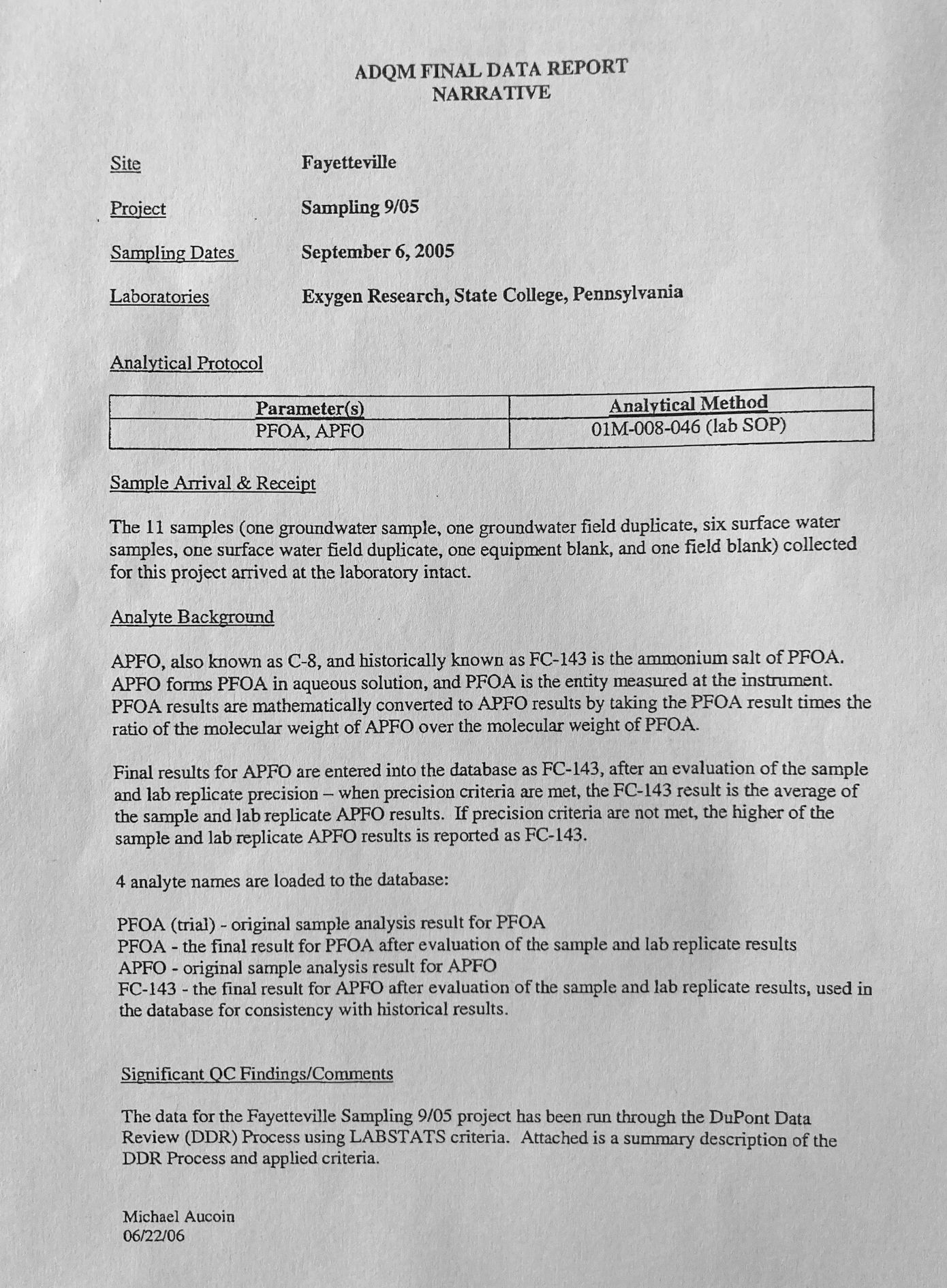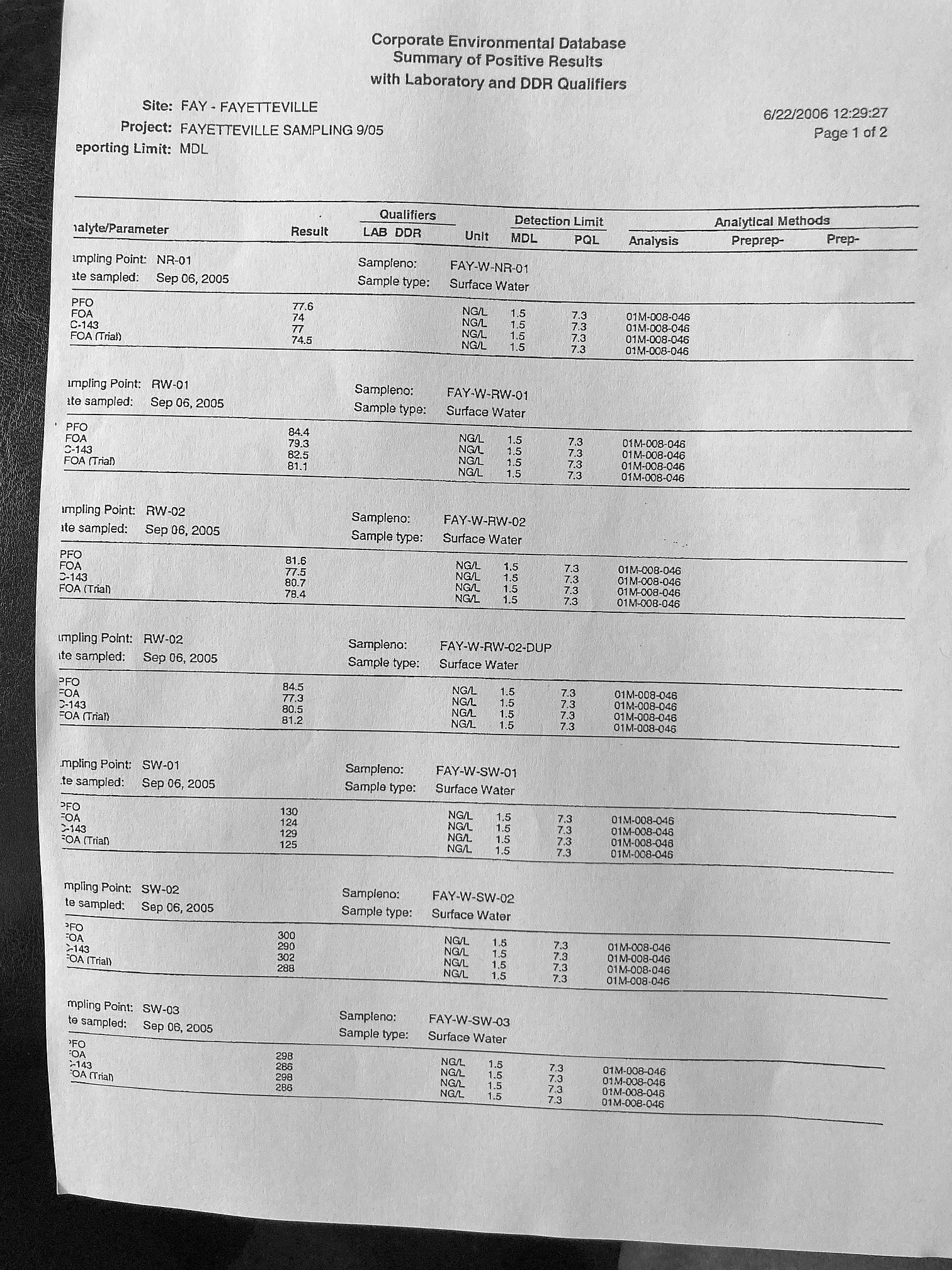

The data shown below at the bottom of this web page was taken from the agency's Division of Waste Management database. The first page shown below indicates that DuPont began sampling surface water for PFOA in September of 2005. The second page shown below provides analytical results and indicates that PFOA was detected in the water. The date of June 22, 2006 shown at the bottom of the second page suggests that the anaytical results may have been submitted to DEQ in the summer of 2006.
At about the same time during the summer of 2006, DuPont Fayetteville Works submitted their annual report to the Division of Air Quality which specified repeatedly that chemicals in the "acid fluoride family" were being transferred to wastewater (via the scrubbers) at their large Fluorochemicals Plant often referred to as the Nafion Vinyl Ethers plant, resulting in PFAS pollutants (PFAAs, fluorocarbons, GenX, and PFAS chemicals) in the wastewater discharged to the Cape Fear River. Note that DuPont's annual report from the previous year (2005) also reported GenX and PFAS chemicals in the wastewater from the Nafion Vinyl Ethers plant.
Reviewing the agency documents from 2005 and 2006, it is not clear which state agency director, deputy director, or upper-level manager was responsible for looking at the "big picture" of the Dupont Fayetteville Nafion Vinyl Ethers plant and its discharges of chemical pollutants (fluorocarbons, acid fluorides, GenX, PFAAs, PFAS, etc.) into their wastewater, to the air, and in their waste.
2003: DuPont notified the agency's Division of Waste Management that PFOA had been detected in groundwater as part of their "baseline study" associated with the new C8 Plant (also known as the APFO Plant).
2004 September: DuPont notified an inspector with the agency's Division of Air Quality that the fluorocarbons (PFAAs, GenX, and PFAS pollutants) in their wastewater discharged to the river won't break down - they are forever chemicals.
2005 July: DuPont's annual written report to the agency's Division of Air Quality showed air and wastewater discharges of acid fluorides, PFAAs, GenX, and PFAS chemical pollutants from their Nafion Vinyl Ethers plant (via the scrubbers).
2005 August: An editorial in the Fayetteville Observer urged state agency officials to "step in and conduct a far more extensive testing program."
2005 September: DuPont and the agency's Division of Air Quality held a meeting in Raleigh on September 23rd to discuss DuPont Fayetteville Works. The day after the meeting an environmental engineer in the agency's Fayetteville office was removed from all responsibilities and communications related to DuPont. This was the same engineer who inspected DuPont Fayetteville in 2004 and reported that the fluorocarbon chemicals in the wastewater discharged to the river won't break down.
2005 September-November: An environmental group (C8 Working Group) held meetings about DuPont Fayetteville Works with the agency Directors for Air Quality and Water Quality, as well as an official with Waste Management.
2005 December: The C8 Working Group held a meeting about DuPont Fayetteville Works with EPA Region IV in Atlanta.
2006 July: DuPont's annual written report to the agency's Division of Air Quality showed air and wastewater discharges of acid fluorides, PFAAs, GenX, and PFAS chemical pollutants from their Nafion Vinyl Ethers plant (via the scrubbers).
2006 Summer: DuPont reported the detection of PFOA in surface water and groundwater to the agency's Division of Waste Management.

